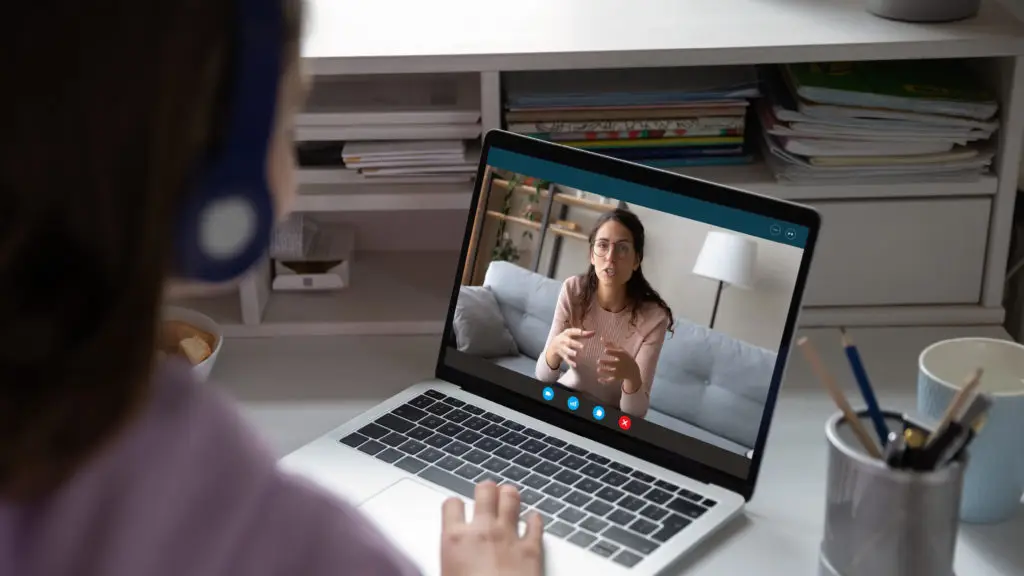This is the first blog post in our Notes from the Field: Special Education blog series.
When the pandemic hit last spring, schools across the country shifted out of sheer necessity to virtual meetings to discuss students’ Individual Education Plans (IEP). But the move has had some unanticipated benefits, with some educators and parents praising them for their convenience and for empowering family members to be more active participants in discussing their educational needs.
The virtual IEP meetings should stay—at least as an option—even after the pandemic abates.
IEP meetings, which bring together families and education teams (teachers, administrators, related service staff) are a cornerstone in special education services and support. The meetings, which must be held at least once a year, are meant to create a time to collaborate with parents—and sometimes students—to lay out learning goals, settle on specific strategies to support the child’s learning, and to try to get all participants on the same page.
Unfortunately, the meetings often do not live up to their promise. Parents consistently report low satisfaction: they often do not feel like equal members of the team. Specifically, they complain that the meetings too often feel rushed, attendance from school-based members of the team can be low, and that they feel an imbalance of power resulting from parents being outnumbered at a table of educators. In a survey of 20 parents of students with disabilities, all of them reported feeling frustrated and overwhelmed—even sad—at IEP meetings (Zeitlin & Curcic, 2014).
Seeking to understand and learn about special education offerings for students with disabilities during the COVID-19 pandemic, we partnered with 15 schools across the country. Over the last year, we have interviewed approximately 100 special education directors, principals, teachers, parents, and students with IEPs at the 15 schools. Consistently, educators and parents reported that virtual IEPs have led to increased meeting attendance, facilitated higher levels of active engagement in meetings, and fostered stronger partnerships between families and the special education teams. While the sample size is limited, the virtual IEP meetings happening at the 15 schools are similar to those happening at thousands of schools across the country.
Virtual IEP meetings can make scheduling and attendance easier for parents and teachers alike. One parent noted the benefits to her as a busy working mom:
“I think one thing [my family] is seeing is there’s a lot of things we could just do that didn’t require us to have to go in [the school building]. . . . I don’t mind coming in, but [virtual is] easier.”
The benefits can go well beyond ease of scheduling.
Educators report that the switch from in-person to virtual IEP meetings prompted them to reflect on the intent of the IEP meeting, what information is most essential to convey, and how to run a meeting with the needs of students and families front of mind. One special education director described how her team adjusted their approach in preparation for virtual IEP meetings:
“We created a virtual IEP guide. We updated our resources on how we facilitate [meetings]. We updated our facilitation talking points. We had a mini PD with our ISC specialists to discuss ‘How do you communicate with families about what the virtual IEPs are going to be, the advantageous elements of it, the ways that [parents] can engage and have their voice still heard and really advocate, as well as give [parents] an honest opportunity to just say if they feel comfortable or not.’ So we crafted some talking points for them. We did a lot of practicing.”
The director said that all of this reflection and preparation led to more positive and productive meetings. Moreover, families described increased comfort levels using this virtual process.
Virtual meetings, for some parents, create a more balanced power dynamic. At in-person IEP meetings, some parents reported feeling uncomfortable, as if on the educators’ “home turfs.” It was not uncommon to see the educators on one side of the table facing a parent on the other side.
But the turf aspect doesn’t exist in a virtual meeting, with educators and families observing that many parents feel more power and agency as a result. One special education director observed:
“In some ways we’ve actually had better communication with parents through Zoom. . . . I think sometimes a parent that comes in and is across the table from five or six adults in that profession can feel a little uncomfortable or inferior. I think Zoom takes the edge off a little bit.”
A more even playing field between educators and parents opens the door for increased collaboration between educators and parents, ultimately increasing trust and buy-in. One parent reflected on how her relationship with her child’s special education teacher has actually grown more collaborative during remote learning:
“I feel like when I need to reach out to her, I can text her, I can call her, I can email her and we can come up with a solution and she’s quick to respond. . . . We have good communication where we usually have some of the same ideas and are also on the same page or in agreement with a lot of the things that we’re both seeing.”
Another parent reported feelings of partnership with their child’s school as a result of remote learning.
“[The school team] knows that they can call me for anything. I know I can call them for anything. It really is a partnership.”
The IEP meeting can be a powerful tool for ensuring that students with disabilities get the best possible support in school and at home. Years of research shows that increased trust, buy-in, and positive partnerships between educators and parents improves student outcomes.
Though many of us look forward to the return of in-person activities—and some parents will undoubtedly appreciate the opportunity to visit and meet at their childrens’ schools—the virtual IEP meeting is one remote option worth keeping.





